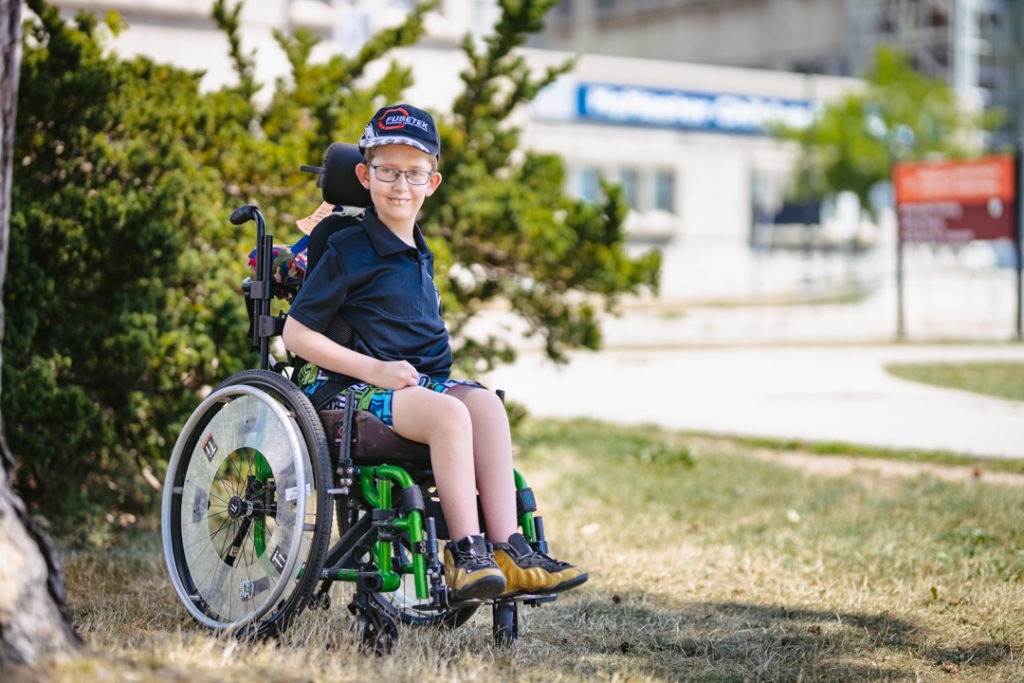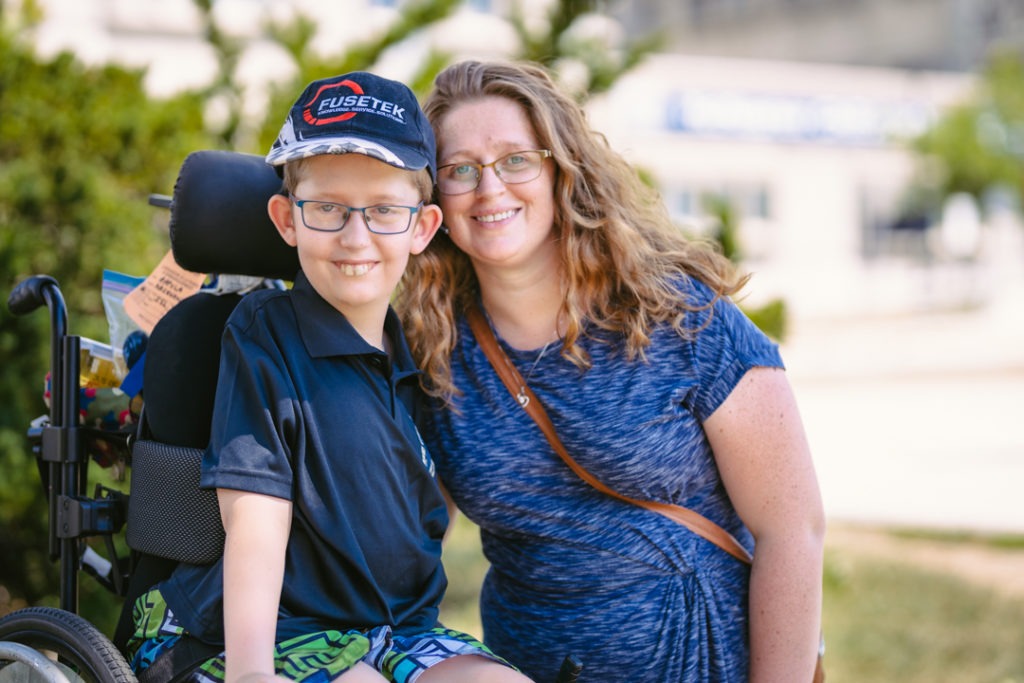
Care before surgery key to Nathan’s healing
When Nathan was born at his family’s local hospital, he was quickly transferred to McMaster Children’s Hospital (MCH) where he spent almost a month. He was born with myopathy, a disease of the muscle; arthrogryposis, characterized by joint stiffness, and scoliosis, a curvature of the spine.
“We knew spine surgery was inevitable one day,” says Nathan’s mom Jenna Degraaf. But she didn’t expect it to come when he was 11 years old. Because of how severely his spine had curved, it was difficult for Nathan to eat and even breathe. His spine was crushing his left lung, resulting in chronic infections.
An emergency visit
In December 2018, Nathan visited the emergency department at MCH with an upper respiratory tract infection and difficulty breathing. Mom also had concerns about weight loss. “I was feeding him toddler portions,” Degraaf says. He was referred to the Complex Care program to plan for future care and surgeries.
Proactive care for complex medical needs
The following year, Nathan was preparing for scoliosis surgery to correct his curve. The team felt Nathan would benefit from the care of the pre-operative care coordination team (POCCT) which began in 2016. The team’s purpose is to be proactive in ensuring children with complex medical needs have a successful recovery after surgery.
They meet monthly to review referrals for patients who require attention prior to surgery. If they are good candidates, they meet with these patients and their families prior to surgery and follow them through their recovery.
The team make-up depends on the needs of the child, but can include pediatricians, physiotherapists, quality nurses, clinical managers, dietitians, child life specialists, and in Nathan’s case, a respirologist.
The team has received over 50 referrals so far, many of which are from orthopedics (to prepare children for hip replacement or scoliosis repair) or general surgery. Any surgeon or surgery can make the referral for patients with complex medical needs.
“As a parent I find the biggest thing about having them is that I don’t explain Nathan’s story every time I go to the doctor,” Degraaf says. “We have an entire team of people who know Nathan and his history.”
G (gastronomy) tube
At just 42 pounds pre-surgery, the team decided that Nathan would benefit from a G tube so he could gain weight and nourish himself before his scoliosis repair. A G tube is a tube that is inserted through the abdomen to bring nutrients directly to the stomach to ensure a child is getting the calories they need. The tube can stay in place as long as a child needs it.
In April 2019, Nathan had surgery to insert the tube. He was eating a mixture of solids and nourishment from the tube and gained approximately two pounds in the six weeks before surgery. Without the tube, it might have taken Nathan much longer to recover.
“We know that post-op healing is so important,” says POCCT dietitian Jillian Owens. “A big scoliosis repair shifts everything around. It really impacts how you are able to eat and how your bowels work. The complex care team felt that the G tube was necessary.”
A debt of gratitude
Scoliosis repair surgery is a 10-12 hour surgery which requires a large incision. Afterwards, the patient can’t eat for a while so a dietitian works with families before and after surgery to optimize the child’s nutritional status and support them during recovery.
Surgery successfully reduced Nathan’s scoliosis from 90 degrees to just 20 degrees. He was discharged home with his tube after ten days in hospital, just a few days longer than the average patient. He still has the tube today and continues to be cared for by the Complex Care clinic.
His weight has almost doubled from 42 pounds pre-surgery to 72 pounds after a year of using a combination of tube feeding and oral feeding. Nathan gets hooked up to water to stay hydrated throughout the day through his tube, does routine feeds at nighttime, and can even carry it in his backpack.
“I think Nathan is a huge success story for the tube,” says his mom, who plans to keep the feeding tube in for a couple more years, especially since Nathan is preparing for major foot surgery.
Degraaf is thankful the POCCT team will continue to support Nathan through his complex care journey.
“As a parent, you know that you always have that support. You know that you’re not trying to go through this alone. I owe them a debt of gratitude.”

